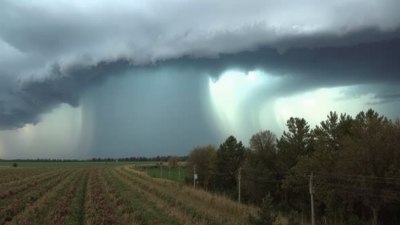The Great Weather Debate: Is 60°F Warm or Cold
Some people throw on shorts at 60°F, while others reach for a sweater. Why does this seemingly neutral temperature divide people so much?

This image was created with the assistance of DALL·E
It’s the kind of weather that sparks endless debates: 60°F (16°C). For some, it’s the perfect temperature—ideal for outdoor activities, light clothing, and fresh air. For others, it’s borderline chilly, a sign to layer up and stay cozy. So why do people experience the same temperature so differently? The answer lies in location, personal tolerance, and even psychology.
Where You Live Shapes Your Perception
Someone from Florida might consider 60°F a cool, crisp day, while a person from Canada sees it as practically summer. If you're used to warmer climates, anything below 70°F might feel cold. On the flip side, people in colder regions might break out the T-shirts when temperatures hit 60°F, relieved to finally feel some warmth.
It’s all about what your body has adapted to. People who experience harsh winters tend to have a higher cold tolerance, while those in year-round warm climates feel the chill more easily.
Wind, Sun, and Humidity Make a Difference
60°F isn’t always the same depending on the conditions. If it’s sunny and calm, it can feel pleasantly warm. Add some wind, shade, or dampness, and suddenly, it’s sweater weather. Humidity also plays a big role—dry air makes cool temperatures feel even crisper, while humid air can make 60°F feel milder.
Personal Cold Tolerance Varies
Everyone has a different threshold for what feels cold. Some people naturally run warm, rarely needing extra layers. Others feel chilly even in moderate temperatures due to differences in circulation, metabolism, or body composition.
Psychology plays a role too—if you expect 60°F to feel cold, you’ll probably perceive it that way. If you associate it with warmth, your brain adjusts accordingly.
What Do People Actually Wear at 60°F?
Fashion choices at this temperature range widely. In the same city, you might see one person in a hoodie and jeans while another rocks shorts and a T-shirt. Here’s a general breakdown of what people wear at 60°F:
- Warm-weather types: Light jacket, hoodie, or long sleeves.
- Cold-weather folks: T-shirt, maybe a light sweater, but nothing too heavy.
- Those who always feel cold: Full-on coat, scarf, and gloves—because why risk it?
The Verdict: It Depends on You
So, is 60°F warm or cold? The answer depends on your location, your body, and how you personally feel about cooler temperatures. One thing is certain—it’s the kind of weather that keeps fashion unpredictable and debates alive. Next time someone complains that it’s too cold or too hot at 60°F, just remember: it’s all relative.










